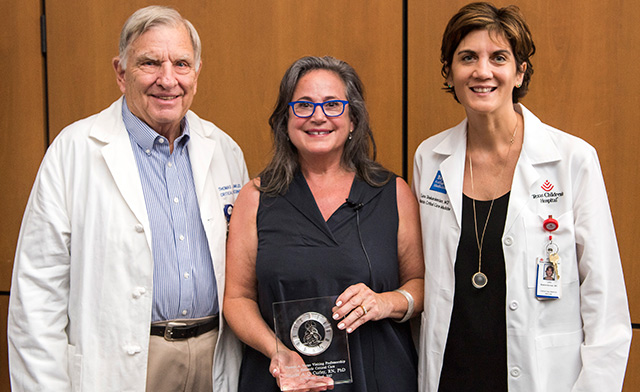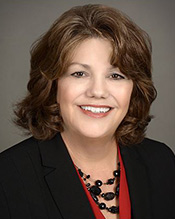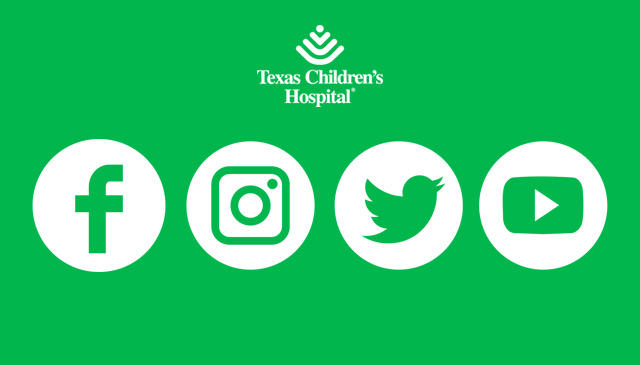 At Texas Children’s, we know just how important it is to keep the patient and family’s experience at the forefront of everything we do. Enhancing the experience for every patient and family who walks through our doors to receive care remains our top priority.
At Texas Children’s, we know just how important it is to keep the patient and family’s experience at the forefront of everything we do. Enhancing the experience for every patient and family who walks through our doors to receive care remains our top priority.
“We collect feedback year-round from our patient families to better understand how they experience their care with us, as well as to compare Texas Children’s experience with that of similar women’s and children’s hospitals across the country,” said Texas Children’s Director of Patient and Family Services Katie Kalenda Daggett. “The improvement initiatives and activities implemented across the Texas Children’s system are directly tied to what they tell us through the surveys.”
Starting on October 1, 2017, Texas Children’s will implement several new changes to the Patient Satisfaction Survey in response to feedback from patients, families, staff and providers. These enhancements will make the survey process more convenient for patient families and will provide specific actionable insight on what we do well and on where we have opportunities.
There are several survey improvements that will be implemented in FY18:
- All phone surveys will transition to e-surveys. E-surveys will give families the opportunity to provide feedback almost immediately or when it is most convenient for them. This will make data more timely for teams. Patient families will also have the opportunity to provide feedback via their mobile devices. The e-survey will be available in two languages – English and Spanish – which will allow staff to receive feedback from the majority of Texas Children’s patient population. Through e-surveys, employees and staff will have the opportunity to survey 100 percent of the eligible patient population.
- Survey questions will be condensed with the exception of inpatient surveys. Instead of 20 to 60 questions, the e-surveys will consist of 15-20 questions. Survey questions are selected based on their correlation to the patient’s overall satisfaction, the ability to take action, unit-level importance and Magnet reporting. By only asking questions that matter most to patients and their families, the goal is to achieve a better use of patients’ time when completing the survey.
- Transition to CAHPS survey: Pediatric and adult inpatients will receive a Consumer Assessment of Healthcare Providers and Systems (CAHPS) survey upon discharge. The Leapfrog Survey and other regulatory bodies use HCAHPS to measure patient satisfaction. This adjustment will allow Texas Children’s to benchmark the experience of care with others across the nation.
- Transition to NICU survey: Parents of patients in our Newborn Center will receive a NICU specific e-survey which provide meaningful questions pertaining to the hospital’s NICU population. This survey will allow our NICU to benchmark patient experience scores with other NICU’s across the nation.
In addition to these improvements to patient satisfaction surveying, Texas Children’s will transition to top box for goal setting and data reporting. Considered the industry standard for measuring patient satisfaction, top box is the percentage of respondents who gave the most positive response on the survey scale, such as “very good,” “yes,” or “always” – depending on survey type.
“Patient satisfaction goals will transition from a mean score to top box percentile which is simpler and more concise than a mean score,” said Aileen Rago, assistant director of Patient and Family Services. “Data, reports and unit goals will look different, as top box will be used in place of the mean score. A top box score of 67 percent means that 67 percent of patients/parents responded “very good” to the survey question. Essentially, top box will showcase how consistently we deliver on the experience at Texas Children’s.”
While these changes will take time to get used to, these improvements will provide employees and staff with more timely, meaningful data and benchmarking to ensure we create the best experience for our patients and their families.
“Patient and family experience at Texas Children’s is inclusive of the medical care we provide at the bedside,” Kalenda-Daggett said. “It is a reflection of our partnership with the patient and family. Everything we do revolves around our patients and families being heard and responded to. With these changes, we will be able to survey more of our patients in ways that works best for them; in turn we will better understand the needs of our patients and families, and respond compassionately.”






